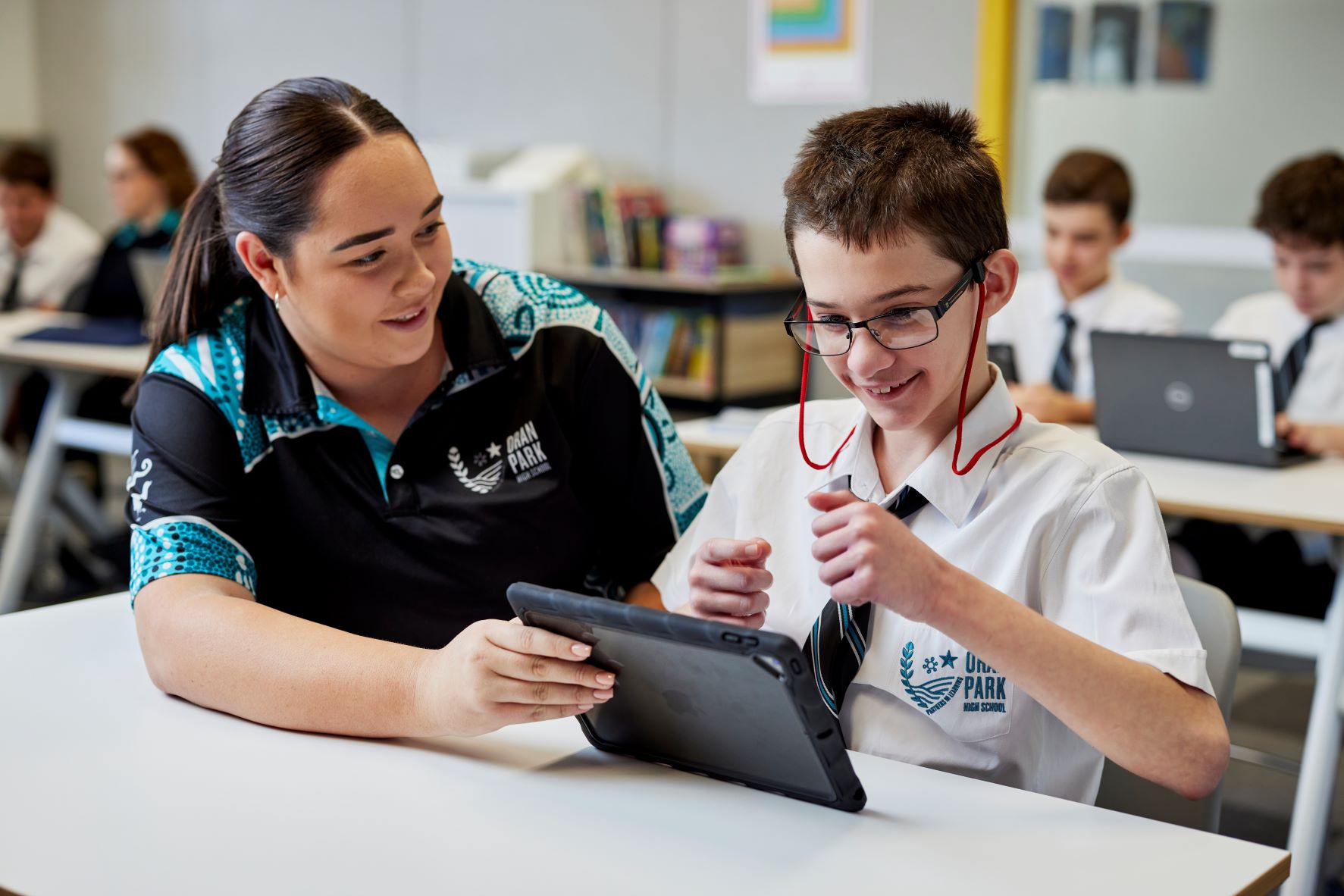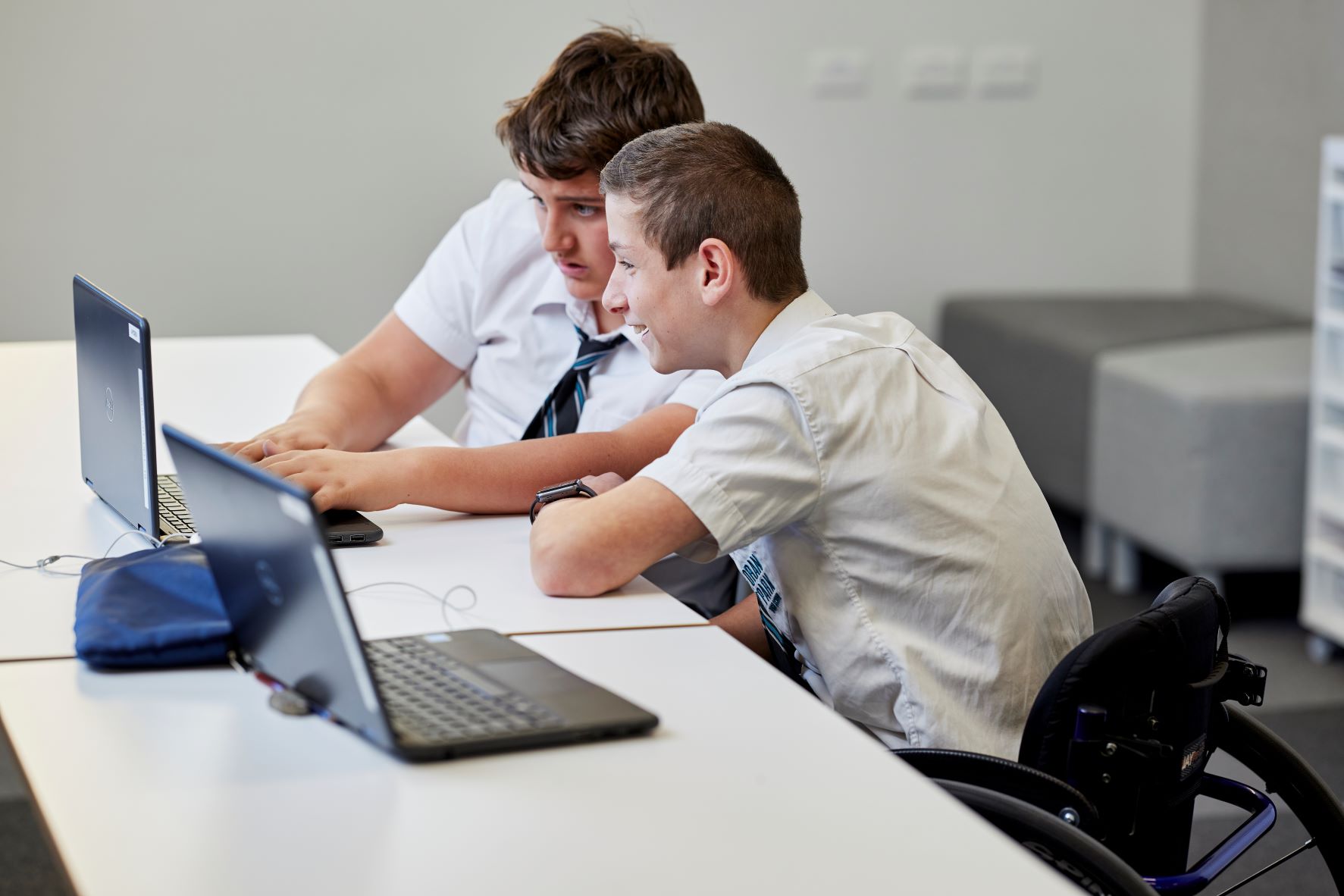Building the student-teacher relationship
This guide will provide an overview of the ways that school leaders and learning and support teams can support teachers in addressing difficulties in the teacher-student relationship through providing an overview of:
(i) barriers to positive, respectful and safe relationships (i.e. what might be contributing to any difficulties in the relationship)
(ii) pathways to improve teacher-student relationships.
A Guide for School Leaders and Learning and Support Teams
Positive, respectful and safe teacher-student relationships have many benefits for students and their teachers. See: What works best update 2020.
A positive, respectful and safe teacher-student relationship promotes inclusion, and supports:
A sense of belonging, reduced school anxiety, and improved mental health and wellbeing. See: Student Welfare.
Increased school engagement and achievement.
Fewer behaviours of concern, and improved development of social-emotional skills.
Increased adaptability and self-determination (students feel secure and better able to explore and express themselves).
Improved reciprocal relationships with peers.
Some of the benefits for teachers include:
Increased wellbeing.
Reduced stress and burnout or attrition.
Increased satisfaction in the classroom.
Understanding the strengths and abilities of students facilitates a more settled classroom environment for all.
Studies found that teachers report a sense of fulfilment in teaching students with disability.
Sometimes teachers may experience challenges in building and maintaining a positive, respectful and safe relationship with a student. As a leader in inclusion, you can support teachers to (i) share their understanding of the student, (ii) identify what may be contributing to any difficulties in the relationship, and (iii) provide resources, support and mentoring to teachers to help them create a safe, caring environment where they nurture, include and positively engage students.
Receiving support from mentors and leaders when reflecting on the teacher-student relationship is particularly important for teachers who may have low self-efficacy in inclusive practices - that is, teachers who may have lower levels of confidence in their own abilities to teach and connect with students with disability.
Building the student-teacher relationship
Some of the key barriers that can create difficulties in the teacher-student relationship include communication, the teacher’s understanding of disability, how they manage conflict, and their mindset. See: Behaviour support toolkit.
Taking time to reflect with a teacher on which areas may contribute to difficulties in the relationship can help you collectively identify specific supports and opportunities to equip the teacher to build a more positive relationship with a student. Observing the interactions between a teacher and students during class as part of the performance and development cycle can also help identify where some of the difficulties may be arising.
Understanding of the strengths and characteristics of a specific disability
When teachers have a strong understanding of a student, their strengths, needs, and the adjustments that will best support that student, they are better equipped to build a more positive relationship with the student. These deep understandings help teachers to engage in practices that foster student success and minimise potential frustrations and conflict.
Teachers may look for specific indicators that they have developed a connection or rapport with a student. However, connection and rapport can present in many forms. Teachers may not recognise some of these signs of connection, including with students with disability. For example, understanding that some students on the autism spectrum may not make eye contact or show a lot of verbal or nonverbal expression, can help teachers to recognise that these mannerisms do not indicate a lack of connection or rapport.

Respectful and positive management of conflict
Strong teacher-student relationships support respectful and positive management of conflict. How the teacher models conflict resolution in the classroom, including management of behaviours of concern, is very important in setting expectations. When teachers are equipped to guide the student through communicating effectively with assertiveness and respect, the teacher-student relationship can remain mutually respectful.
See: Teacher Standards | (aitsl.edu.au); Conflict resolution and Behaviour support toolkit
Mindset
Positive, mutually respectful and safe teacher-student relationships are built when teachers:
Recognise the importance of the teacher-student relationship.
Hold high expectations for all students.
Engage in honest reflection about the relationship, including the ways in which they positively and negatively impact that relationship.
Hold a recognition that person-centred careers such as teaching, where the focus is on investing in others, can sometimes involve challenges. This can include emotional labour (managing their own emotions so they can manage and support others).
Actively identify student characteristics they are grateful for.
Remain open-minded and flexible.
Regularly engage in activities to support their personal wellbeing.
Seek support when required.
Communication
Students with disability may communicate and interact with others in different ways. Some students may use alternative communication methods, including Auslan, signed or visual communication, or assistive communication devices. Some students may interpret social situations differently, or may not recognise the implied meaning of words or facial expressions. This provides an opportunity for teachers to learn new and diverse ways of relating with, and understanding, their students.

Pathways to improved teacher-student relationships
How can we support teachers to increase their understanding of disability and individual students?
Build positive home-school partnerships by implementing processes that support teachers to value parents or carers, and their knowledge of their child.
Identify and plan for relevant professional learning opportunities (including access to strengths- and evidence-based resources on disability and inclusion).
Provide structured opportunities for teachers to develop an understanding of an individual student. For example, scheduled time to observe and engage with the student to better understand them, and meetings with their parents or carers.
Consider how opportunities for teachers to collaborate and share ideas with each other can be facilitated.
Build a school culture of holding high expectations for students with disability.
Consider whether an understanding of culture, and how that interacts with disability, may also be relevant for specific students.
Consider whether the current personalised learning and support planning processes can be improved to provide opportunities for teachers to engage more deeply with parents or carers and external agencies, to support a deeper understanding of the student and their strengths and needs.
How can we support teachers to understand and address conflict? Work with teachers, and where appropriate the student, parents or carers, or other relevant staff, on developing a shared understanding of why conflict is occurring. For example, some common causes of stress for students with disability that may lead to conflict include:
communication barriers (for example, is the student able to communicate their needs and wants?)
lack of structure
changes to routine
sensory overload
or being asked to complete tasks that are too difficult or too easy for them.
Once the causes of conflict are identified, determine where the points for intervention are. These may include:
addressing the environment (for example, reducing sensory overload and creating a structured environment)
supports available to the teacher/student (for example, allocation and effective partnership with SLSOs)
teaching practices (for example, providing warning when a transition is approaching)
conflict management approach (for example, reacting flexibly)
understanding of disability
positive coping strategies
supports with managing behaviours of concern.
Provide opportunities for teachers to shadow other teachers to observe a range of strategies for effective communication, negotiation, and cooperation in the classroom.
Where appropriate, partner with teachers, families, allied health professionals (or other relevant stakeholders) and other staff to identify key strategies and skills to be developed or implemented.
Some evidence-based approaches for respectful and positive management of conflict include:
Preventative and proactive strategies and adjustments to avoid escalation of conflict, including remaining calm, particularly when speaking to the student.
Acknowledge a student’s emotions and perspectives so they know they have been understood, and use warm and patient communication.
Identify signs of stress early (in yourself or the student), and consider whether individual or whole class relaxation techniques, mindfulness, or brain breaks may help everyone to reset.
Be flexible - some students may not respond with flexibility, and so teachers may need to be particularly open and adaptable. When teachers are open and adaptable to adjusting or differentiating their lesson plan, this can quickly de-escalate a situation.
Support the student to assertively and respectfully seek help and communicate their needs or wants. This involves active listening and asking them to elaborate using their preferred communication style.
Model problem-solving and respectful communication skills in the classroom.
See: What works best update 2020
Intentionally create positive and mutually respectful interactions between teachers and students
Create opportunities for teachers and students to have positive and mutually respectful interactions. Consider whether these interactions need to be supported by other staff in the initial phases.
Gratitude can be practised by teachers to model and create positive interactions. This can involve:
Greeting students (saying something positive or greeting students at the door).
Active relationship building (acknowledge and value each student and their contributions).
Practicing intentional, internal gratitude toward students, which can result in changed actions. For example, thanking students and providing positive feedback.
Building an understanding that gratitude holds no expectation of receiving something in return, and can be expressed irrespective of current mood and emotions.
School Excellence Framework alignment
Wellbeing
Effective classroom practice
Australian Professional Standards for Teachers alignment
Standard 1: Know students and how they learn
Audience
School leaders, teachers
Purpose
School leaders can use this planning tool to support teachers to develop their professional relationship with their students
Timeframes and when to use
This resource can be used at any time to provide further information and practice guidance
Evidence base
This resource was developed with the AllPlay Learn team who conducted a series of systematic reviews of the empirical literature, with over 177,000 articles screened. The resources remain up-to-date, with content reflecting best practice reviewed by a world-class multidisciplinary research team, led by Monash University.
Reviewed
June 2022. Share your feedback here